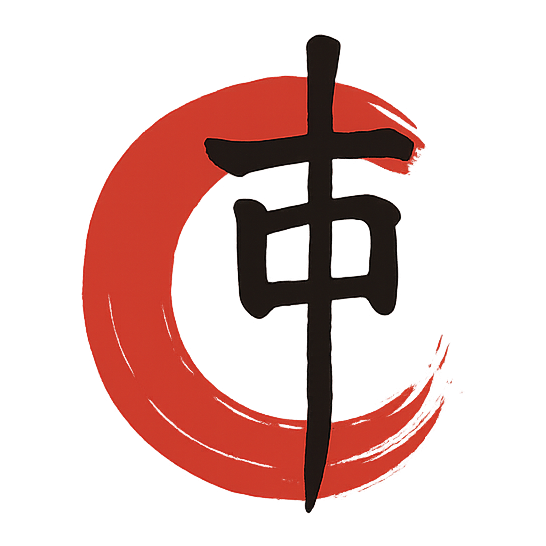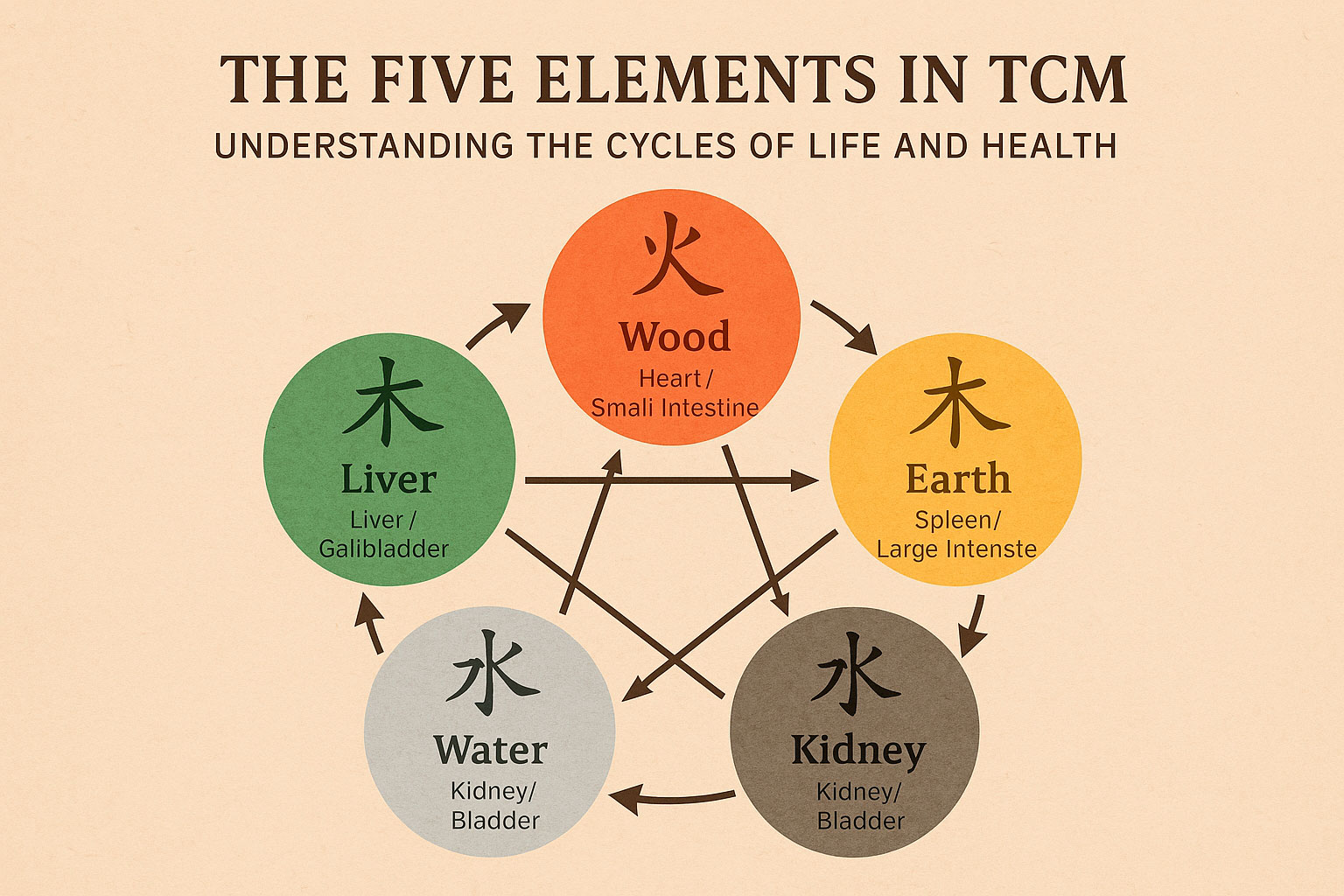The Five Elements Theory (五行学说) is a cornerstone of Traditional Chinese Medicine (TCM), offering a symbolic and functional map of how the natural world and the human body interact.
The five elements — Wood, Fire, Earth, Metal, and Water — are more than physical substances. In TCM, they represent phases of transformation, cycles of energy, and the relationships between organs, emotions, seasons, colors, and more.
By understanding the Five Elements, we gain insight into physiology, pathology, diagnosis, and treatment within the holistic framework of TCM.
🔶 What Are the Five Elements?
| Element | Chinese | Direction | Season | Color | Organ (Zang) | Emotion |
|---|---|---|---|---|---|---|
| Wood | 木 | East | Spring | Green | Liver / Gallbladder | Anger |
| Fire | 火 | South | Summer | Red | Heart / Small Intestine | Joy |
| Earth | 土 | Center | Late summer / Transition | Yellow | Spleen / Stomach | Worry |
| Metal | 金 | West | Autumn | White | Lung / Large Intestine | Grief |
| Water | 水 | North | Winter | Black | Kidney / Bladder | Fear |
Each element corresponds to a seasonal energy, a pair of internal organs, and an emotional and physiological function.
🔶 Two Key Relationships: Generation and Control
The Five Elements interact in dynamic ways that explain health and disease:
1. Generating Cycle (Sheng 生) — Supporting
Each element nourishes the next:
- Wood → Fire → Earth → Metal → Water → Wood…
Example: Liver (Wood) supports the Heart (Fire) by ensuring smooth Qi flow.
2. Controlling Cycle (Ke 克) — Regulating
Each element restrains another to maintain balance:
- Wood controls Earth
- Earth controls Water
- Water controls Fire
- Fire controls Metal
- Metal controls Wood
Example: Kidney (Water) controls Heart (Fire) — excessive fear may damage joy.
🔶 Clinical Applications in TCM
TCM practitioners use the Five Elements to:
- Understand organ relationships
- e.g., Liver overacting on Spleen → digestive issues from stress
- Interpret emotional patterns
- e.g., chronic worry affecting Spleen → poor appetite, bloating
- Design treatment strategies
- Tonify the “mother” organ or sedate the “child” in specific cases
📌 Example: For someone with Heart Yin deficiency (Fire), supporting the Kidney (Water, the controller of Fire) may be part of treatment.
🔶 Five Elements in Diagnosis
Observation of the face color, voice tone, pulse, tongue, and emotional state helps determine which element is out of balance.
| Sign | Element Affected |
|---|---|
| Red face, restlessness | Fire excess |
| Pale skin, sadness | Metal deficiency |
| Greenish hue, irritability | Liver (Wood) stagnation |
| Yellow complexion, overthinking | Spleen (Earth) deficiency |
| Dark circles under eyes, fearfulness | Kidney (Water) weakness |
🔶 Five Elements in Daily Life
TCM recommends seasonal and lifestyle adjustments based on elemental energy:
- Spring (Wood): Start new projects, eat green vegetables, move gently
- Summer (Fire): Light foods, stay calm, avoid overheating
- Late Summer (Earth): Strengthen digestion, simplify routines
- Autumn (Metal): Breathe deeply, let go of emotional clutter
- Winter (Water): Rest more, nourish Kidney energy, conserve energy
🔶 Conclusion
The Five Elements Theory provides a universal framework for understanding health as a living, interdependent system. It teaches that balance is dynamic, and by respecting the rhythms of nature — both inside and outside the body — we can live with greater harmony and resilience.
In TCM, to diagnose is to see patterns, and to heal is to restore elemental balance — a wisdom that is timeless and ever-relevant.


发表回复